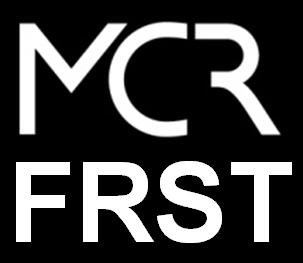Insights
Financial and Regulatory Strategy Tool
 Download the FRSTTM brochure for municipals
Download the FRSTTM brochure for municipals
Download the FRSTTM brochure for G&T cooperatives
Download the FRSTTM brochure for distribution cooperatives
Download the FRSTTM brochure for IOUs
MCR’s Financial and Regulatory Strategy Tool (FRST™) is the forecast model of choice for finance and regulatory professionals who want a sophisticated planning tool that is easy to operate without the overhead, software coding and expense of proprietary “black box” models on the market.
FRST™ is written in Excel with a unique structure that manages large amounts of data, yet requires no coding, and allows users to quickly change the model’s logic and reports to address changing business needs. With its flexible data loading and mapping function, users can easily load data from budgeting, general ledger and capital asset systems; and FRST™ seamlessly integrates with production cost and gas supply planning models.
Clients often cite the FRST™ reporting feature as a favorite element of the model. It has the ability to define a virtually unlimited number of time periods and levels of detail for analyzing financial and operating data. Analysts can quickly compare the results of multiple planning scenarios and perform variance reporting of budget vs. actuals and budget to forecast.
FRST™ has a unique approach to regulatory analysis, allowing a high degree of flexibility. The model calculates revenue requirements based on key drivers and identifies the need for potential revenue changes. The easy-to-use regulatory planning panel allows for historic and future test years with movable test periods and rate effective dates. Analysts can quickly adjust ratebase, costs and revenues based on the most recent rate case or test new assumptions.
Why our clients choose FRST™…
- Open, flexible model
- Fast processing
- Robust reporting & analysis
- Wide variety of rate calculation options
- Knowledgeable consultants
- Easy to work with consultants
- Fast implementation (less than 8 weeks)
- Value (1/3 the cost of the competitors)
What our FRST™ clients are saying…
“It was lightning speed ahead of our prior model. With FRSTTM, we could create more reports, more dimensions in a fraction of the time. There hasn’t been a need that’s come up that we haven’t been able to solve with FRSTTM.”
“We liked that FRST™ is Excel-based and has the balance sheet and cash flow forecasting. Anyone can own it, so we could easily make changes within Excel.”
“We use FRST™ for executive management purposes in terms of looking at strategic issues, looking at financial information to provide credit agencies, earnings outlook for investment analysts. It is our budgeting tool from an income statement perspective.”
“MCR has a great product and delivered exactly what we needed. They have a skillset that’s unique to the utility industry.”
“There’s no doubt FRST™ has enabled us to have a much better handle on our key financial metrics and requirements, and to be able to articulate those requirements to the Board and to regulators.”
“The initial development and flexibility of FRST™ just blew us away. With MCR’s knowledge of utilities and experience in forecasting, implementing the FRST™ model worked really quite well.”
FRST™ supports electric, natural gas and water utilities. To learn more, download the brochure that fits your corporate structure.
Developing Robust Business Cases. A Proven Approach to Optimize G&T Capital Budgets in a Tight Credit Market (white paper)
G&T executives are facing increased pressure to reassess capital expenditure levels in response to the recent credit crunch and a slowing economy. However, requirements remain to build additional generation, new transmission and address environmental regulations. The challenge is to optimize and reduce capital spending in this environment in a systematic fashion that recognizes cost-risk tradeoffs. For many years, utilities have used some form of a business case to analyze and review projects before they receive funding. However, for most participants, this approach has become too much of a just go through the motions exercise. To be effective, the business case approach needs to become much more robust and useful to the engineers putting the cases together and to the senior management team needing to make the difficult capital allocation decisions.
Download the G&T business cases white paper
Cooperatives Gaining Substantial Benefits for Renewable Investments
The Inflation Reduction Act has designated billions of dollars to support cooperative development of renewables. Our analysis show how coops now have viable options to develop their own projects
Download the Cooperatives Benefits white paper
Capitalization Policy and Units of Property Integration (case study)
A large IOU operating in multiple jurisdictions faced challenges after merging with another utility; the existing Unit of Property (UoP) catalogues for the merged generation fleet, transmission, distribution and general utility property were burdensome and a constant source of debates in project capital and expense classification decisions. One senior accounting manager at the newly merged utility stated the UoP catalogues had become “out of control.”
Aligning the capitalization methods of both companies provided MCR with an opportunity to integrate industry best practices, discuss critical future projects and address unresolved organizational differences. IOU senior leaders also wanted to establish procedures to ensure the IOU could defend new levels of capitalization, should the public service commissions overseeing the company’s jurisdictions raise questions. MCR was asked to lead this project based on our prior experience with the client working on a UoP catalogue integration for a merger with a former utility.
Download the capitalization policy and UoP case study
Debt Management System: Specifically Designed for Managing Electric Cooperative Debt (brochure)
The typical electric cooperative can have hundreds of individual long-term debt issuances. Oftentimes, this leads to the creation of several disjointed spreadsheets throughout the organization, leaving it difficult to find the most up-to-date information on company debt.
MCR’s Debt Management System (DMS) provides a centralized database for storing, administrating and reporting an unlimited number of debt issuances.
Download the debt management system brochure
Utility Financial Modeling: Spreadsheets Can Deliver Results (point of view)
Financial and regulatory analysts working at utilities understand the need for utility-specific models as the unique challenges of utility forecasting cannot be shoehorned into a model built for other types of businesses. No other industry requires the type of logic needed to translate forecasts of expense, revenue and capital investment into an integrated whole while providing insight into the business. Whether its earnings forecasts for investor-owned utilities or financial metric analysis and rate forecasts for public and cooperative entities, forecast groups must provide models that generate reliable and defensible answers. Modeling for utilities is complex, leading some analysts to believe that the complexity does not lend itself to spreadsheet modeling. But advances in technology and modeling practices make spreadsheets a superior choice for both accuracy and flexibility.
